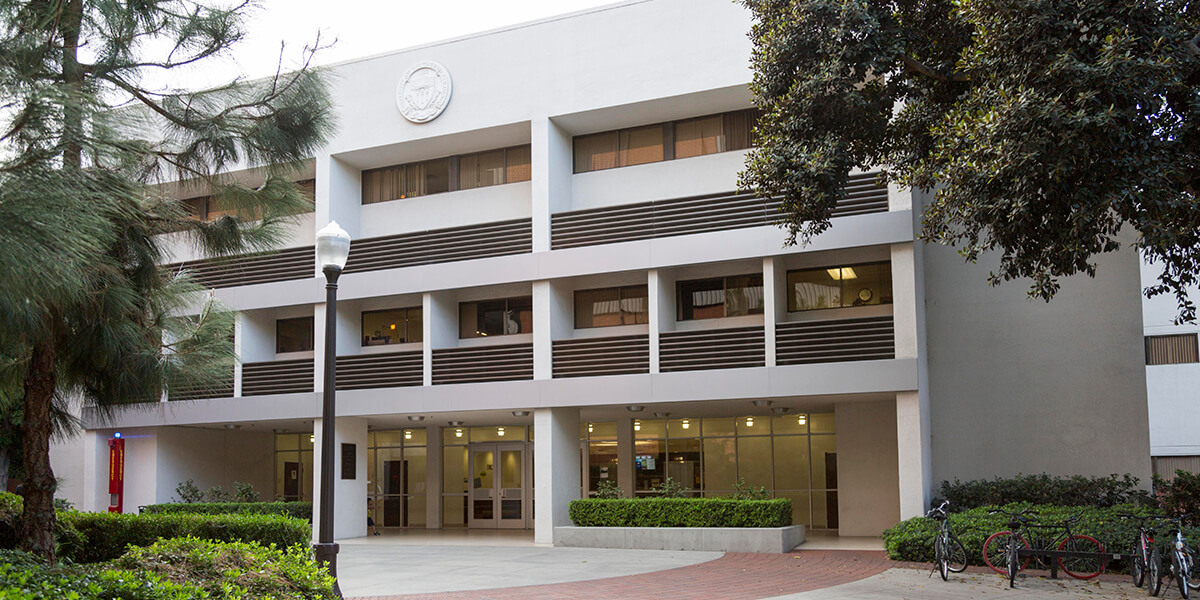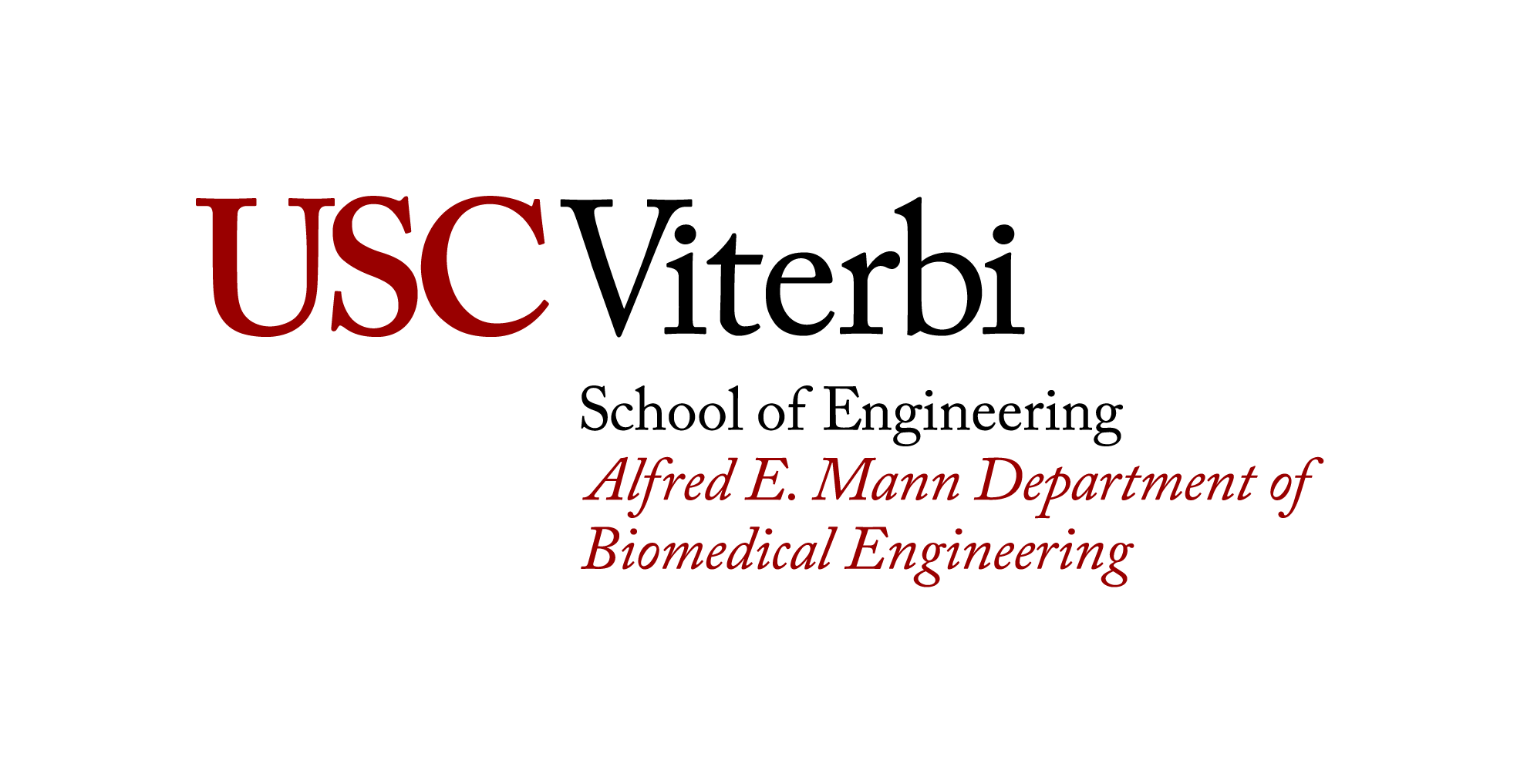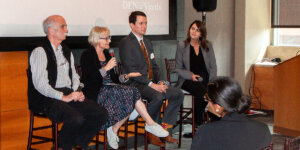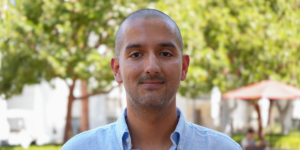
USC Viterbi’s recently named Alfred E. Mann Department of Biomedical Engineering is home to 75 primary and affiliated faculty, driving cutting-edge research from biomedical devices to neural engineering to molecular bioengineering.
In 1976, the United States celebrated its’ 200th birthday, and USC’s department of biomedical engineering was born.
Nearly 50 years later, that department has a name: the Alfred E. Mann Department of Biomedical Engineering.
The $35 million naming gift, made possible by the Alfred E. Mann Foundation for Biomedical Engineering, is among the largest gifts to a department of biomedical engineering in the nation.
Today’s announcement marks the fifth department naming gift at the USC Viterbi School of Engineering — a trend that began in 2002 with the naming of the Daniel J. Epstein Department of Industrial & Systems Engineering.
The new initiative will expand medical engineering research, attract top faculty members and strengthen ties with the Keck School of Medicine of USC. Another $25 million will go towards interdisciplinary endowed chairs across multiple schools to support life-improving and life-saving research, innovation and student learning.

The new logo for the Alfred E. Mann Department of Biomedical Engineering
“Naming the department has been an important goal of the school since it provides additional resources for its growth and global impact,” said Yannis Yortsos, dean of the USC Viterbi School of Engineering. “It is also a testament to the importance of the field and of the faith in the university to advance it to new heights.”
Mann, a former USC trustee and the 1998 founder of the Alfred Mann Institute at USC, passed away in 2016. He developed and supported biomedical breakthroughs such as the rechargeable pacemaker, insulin pumps and the artificial retina.
The newly christened Alfred E. Mann Department of Biomedical Engineering is one of the oldest biomedical engineering departments in the country, born from advances in electrical and mechanical engineering and the realization that engineering innovation could be beneficial to the human body. It’s the first such program in California to offer bachelor’s, master’s and Ph.D. degrees.
A global early pioneer in neural engineering, medical devices and diagnostics, and, in the last 20 years, in molecular bioengineering, the department has achieved many notable successes. They include:
• Restoring Sight. After 25 years of research, Professor Mark Humayun’s Argus 2 device became, in 2013, the first FDA approved artificial retina in the United States to restore sight to the blind. For his remarkable achievements, Humayun was recognized in 2016 with the National Medal of Technology.
• Restoring Memory: In 2011, Professor Ted Berger’s brain implant became the first medical device in the world to restore lost memory function and strengthen recall. The MIT Technology Review later named it as one of the “10 Breakthrough Technologies of 2013.”
• Development of New Medicines. Since 1985, the USC Biomedical Simulations Resource (BMSR), USC Viterbi’s longest continuously funded NIH-research center, led by Professors Vasilis Marmarelis and David D’Argenio, has produced software like ADAPT, used in the development of Herceptin, which is the first biologic developed for the treatment of breast cancer, as well as Rituxan for treating non-Hodgkin’s lymphoma.
Starting in January, the department will be led by a new chair, Peter Yingxiao Wang, an expert in engineered cell-based cancer therapies.
Said Wang: “There now exists a strategic opportunity for the Alfred E. Mann Department to take the lead and spearhead the integration of advancements from different disciplines across engineering and medicine. This marvelous naming gift from Al Mann’s entrepreneurial legacy will create a gateway for the next generation of biomedical engineers at USC and highlight the translational power by integrating fundamental engineering principles for biomedical applications.”
“This is a landmark event,” said Professor David D’Argenio, interim department co-chair, “in the 50-year history of biomedical engineering at USC, which started under the visionary leadership of then Dean Zohrab Kaprielian and founding chair Dr. Fred Grodins. It will catalyze the department’s mission to improve human health and well-being through the creative contributions of our faculty and students. The naming gift will also insure that Al Mann’s entrepreneurial legacy will live on through the innovative discoveries of current and future generations of USC BME faculty and students.”
The new announcement builds upon a string of recent successes in convergent biosciences. In 2014, Gary and Alya Michelson gave the naming gift for the USC Michelson Center for Convergent Bioscience (the largest building on the University Park Campus).
Six years later, a parallel donation by Dr. Allen and Charlotte Ginsburg will help build the Dr. Allen and Charlotte Ginsburg Human-Centered Computation Hall, designed to also house the Department of Computer Science. These two buildings, adjacent to the Irani Hall, which is dedicated to molecular biology, form a “Convergence Plaza,” where engineers, scientists and doctors work together to tackle the most pressing issues in healthcare.
The newly named Alfred E. Mann Department of Biomedical Engineering, with its more than 75 primary and affiliated faculty members, includes two members of MIT Technology Review’s list of best 35 innovators under age 35 (Ellis Meng, 2009; Megan McCain, 2014) and two of the 10 winners of the IEEE Biomedical Engineering Award (Kirk Shung, 2016; Humayun, 2018); two members of the National Academy of Medicine (Humayun and Scott Fraser); a member of the National Academy of Sciences (Steve Kay); two members of the National Academy of Engineering (Humayun and Charles Zukoski); and six members of the National Academy of Inventors (Andrea Armani, Fraser, Humayun, Gianluca Lazzi, Gerald Loeb, and Meng).
“Technology is revolutionizing medicine in many different ways towards the ultimate goal of living without illness,” Yortsos said. “Instead of a hospital being the place you go to get surgery, it can be a place where you go for preventative medicine. Biomedical engineering will play the key role in achieving that goal.”
Published on November 17th, 2022
Last updated on November 27th, 2024













